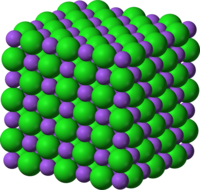
Photo from wikipedia
Abstract Photosensitive resin layered-hybrid lattice structures consisting of octet-truss cells and modified (MOD) re-entrant hexagon cells were designed and fabricated by digital light processing (DLP). Compressive experiments were conducted by… Click to show full abstract
Abstract Photosensitive resin layered-hybrid lattice structures consisting of octet-truss cells and modified (MOD) re-entrant hexagon cells were designed and fabricated by digital light processing (DLP). Compressive experiments were conducted by electronic universal machine, drop hammer (DH) and Split Hopkinson Pressure Bar (SHPB) system to evaluate the nominal collapse strength and failure evolution of the layered-hybrid structures under different loading velocities. All the loading processes were recorded to capture the deformation modes of the layered-hybrid lattice specimens, and the strain distribution was analyzed through digital imaging correlation (DIC) method. The experimental observations reveal that the layered-hybrid lattice structure possesses a steady deformation mode within a large range of loading velocity. The results indicate that the layered-hybrid lattice structures exhibit special deformation mode, which appear to have a promising prospect for protective structure applications. A finite element model of the layered-hybrid lattice was established and numerical simulations were performed to explore the deformation details associated with impacts. The critical velocity at which the structural deformation mode changed was predicted by simulation based on the verified parameters. It reveals that the source of rate-dependent behavior is resulted from both inertia effect and intrinsic strain rate sensitivity of the matrix material by simulations and experiments.
Journal Title: Thin-walled Structures
Year Published: 2020
Link to full text (if available)
Share on Social Media: Sign Up to like & get
recommendations!